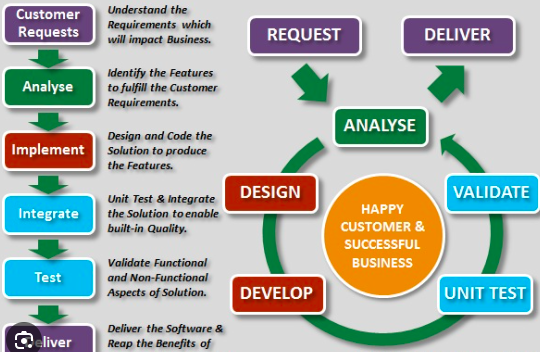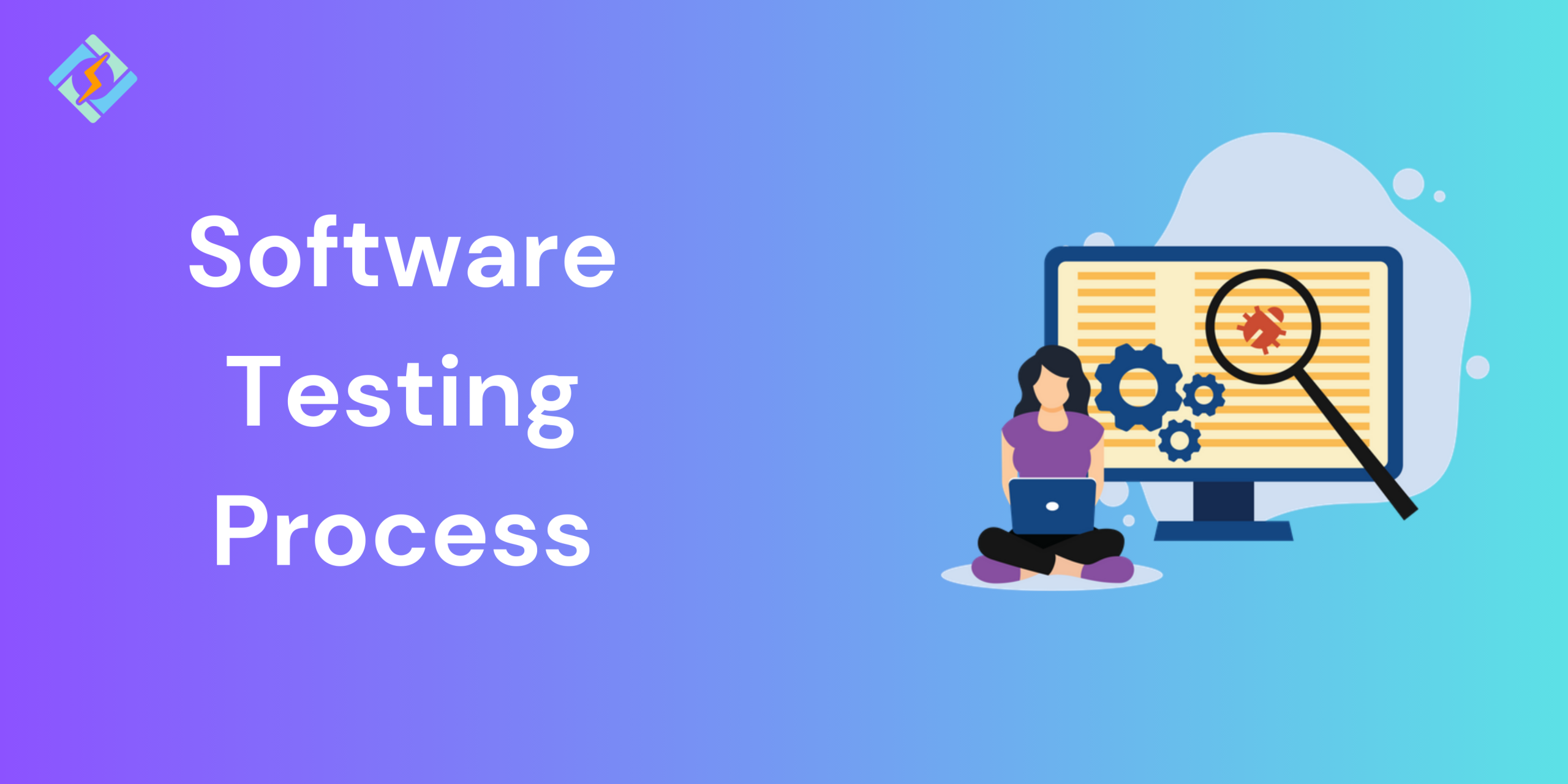Nothing turns customers away faster than a buggy user experience. Once businesses figured this out, they started making testing a must-have in the software development life cycle. Now, testing is a key component in every organization.
This guide will tell you the easiest software testing process you won’t find anywhere.
Today, software testing is most effective when done continuously. This means testing starts during design, continues as the software is developed, and even happens after it is deployed. Continuous testing allows organizations to begin testing without waiting for everything to be fully deployed.
What Is Software Testing?
The software testing process follows a structured approach with stages like requirements analysis, test planning, test design, execution, and maintenance. This framework, called the Software Testing Life Cycle (STLC), helps fix bugs quickly and improves product quality. Without a strong testing process, organizations risk facing more issues with their products.
The software testing process life cycle emphasizes a process-focused and adaptable approach. Testing should be part of the entire software development process to enhance results. The goal of software testing is to identify bugs, confirm proper functioning after fixes, and assess testing effectiveness. There are various testing models, including waterfall, agile, and spiral.
The agile process in software testing model supports rapid adjustments to changing needs and prioritizes frequent client communication during development. In contrast, the waterfall model is linear and is most suitable for projects with well-defined requirements, but it struggles with more complex projects.
Risks of Not Having Software Testing in Place!
- Critical Quality Issues: Product delays and higher development costs might result from fragmented QA procedures that miss flaws.
- Production Delays: New features and enhancements may be delayed if a thorough QA methodology is not in place.
- Damages to Trust and Reputation: Unexpected bugs may cause users to lose trust in you and harm your reputation.
- Compatibility Issues: As platforms, operating systems, and devices become more varied, compatibility is becoming a crucial component of high-quality software. Compatibility problems can be found with the aid of preemptive testing.
The 11 Key Stages of the Software Testing Process

Stage 1: Review the Development Plan
This is the first step in the software testing process, which is crucial before creating the Verification, Validation, and Testing Plan for the software solution. Testers will check if the development plan is complete and correct. They can also estimate how many resources they will need for testing based on how thorough the Project Plan is.
Get exclusive access to all things tech-savvy, and be the first to receive
the latest updates directly in your inbox.
Stage 2: Create the Test Plan
Making a test plan follows the same steps as any software planning. While the structure of all plans should be similar, the details will differ based on the risks perceived by the testers regarding the software.
Step 3: Check Software Requirements
Most software failures come from incomplete or wrong requirements. If the requirements are not gathered correctly, it can raise the implementation costs. Testers need to verify that the requirements are correct, complete, and do not conflict with each other.
Step 4: Check Software Design
In this step, both the external and internal designs are tested mainly through verification methods. Testers need to ensure that the design meets the needs and that it works well on the intended hardware.
Step 5: Test During the Build Phase
The way software is built from the design document will affect how much testing is needed. If the building process is more automated, less testing will be required. However, if a traditional method like waterfall is used, there may be more errors that need checking. It is cheaper to find problems during development than during later testing.
Step 6: Run Tests and Record Results
This involves testing the code while it is running. The methods and tools from the test plan will be used to check if the code meets the software requirements and design specifications.
Step 7: Acceptance Testing
This type of testing allows users to see if the software works well for their daily tasks. It checks if the software performs as users expect, compared to what the requirements say it should do.
Step 8: Report Test Results
Reporting test results is ongoing and can be done both verbally and in writing. It is crucial to report any problems or concerns to the right people quickly, so fixes can be made at a lower cost.
Step 9: Software Installation
After the test team confirms that the software is ready for use, it needs to be tested in the production environment. This checks how the software interacts with the operating system and other related software.
Step 10: Test Software Changes
Although this is labeled as Step 10, it also applies to changes made during implementation. Whenever there are changes in requirements, the test plan must be updated, and the effects of those changes on the software system must be tested and evaluated.
Step 11: Assess Testing Effectiveness
To improve testing, it’s important to evaluate how effective the tests are at the beginning of each software testing task. Although testers mainly carry out this evaluation, it should also include developers, software users, and quality assurance experts if they are part of the IT team.

Manual Testing vs Automated Testing
Both have their places, but teams use a mix of both quite often:
Manual Testing involves checking software by using its functions and human testing features to find defects one by one. This is costly because it needs a person to create the environment and run the tests, which can lead to mistakes like typos or missing steps in the test script.
Best For: Exploratory, usability, and ad hoc testing.
Automation Testing, on the other hand, uses scripts and tools to test software automatically, allowing repetitive tasks to be done without manual effort. Automated tests are stronger and more dependable than manual ones, but their quality relies on the quality of your test scripts.
However, modern software testing tools like testRigor simplify this by enabling test automation without writing a single line of code. testRigor empowers both QA engineers and non-technical team members to create robust, end-to-end tests using plain English, significantly accelerating the testing process while reducing maintenance overhead. If you’re new to testing, check out our continuous integration tutorial to guide you in creating your first test suite.
Best For: Great for progression, performance, and load testing.
Types of Software Testing
Unit tests
Unit tests are small tests that check individual methods and functions in your software. They are close to the core of the application and are usually easy to automate and run quickly on a continuous integration server.
Integration tests
Integration tests check if different parts of your application work well together. This could mean testing how the application interacts with a database or ensuring that different services communicate properly. These tests are more costly to run because they need multiple parts of the app to be working at the same time.
Functional tests
Functional tests look at whether the application meets business needs. They check the results of actions without looking at the steps in between. Sometimes, people confuse integration tests with functional tests because both involve multiple components. The key difference is that integration tests check if you can access the database, while functional tests check if you get the right data from the database based on product needs.
End-to-end tests
End-to-end tests simulate user actions in a fully working app, ensuring tasks like logging in or processing payments function correctly. However, they can be costly and difficult to maintain. It’s best to have a few key end-to-end tests and rely more on unit and integration tests for quicker issue identification.
Acceptance testing
Acceptance tests are formal checks that see if the system meets business requirements. They need the whole application to be running and focus on mimicking user actions. They can also assess how well the system performs and reject changes if certain goals aren’t met.
Performance testing
Performance tests examine how a system behaves under specific workloads. They measure reliability, speed, scalability, and responsiveness. For example, a performance test might check how fast the system responds when many requests are made or how it acts with a lot of data. These tests help identify performance issues and ensure the application can handle peak traffic.
Smoke testing
Smoke tests are quick checks that confirm the main features of an application are working. They are usually done after a new version is built or deployed to ensure everything is functioning correctly.
Common Tools Used in the Testing Process
| Tool | Type | Use Case |
| Selenium | Automation | Web application testing |
| JIRA | Management | Bug tracking and test management |
| TestRail | Management | To organize test cases and results |
| Postman | API testing | Test REST API |
| JUnit | Unit Testing | Java applications |
| LoadRunner | Performance | load testing and stress testing |
Common Challenges In The Software Testing Process
Here are some very common challenges you can face. Just a heads up:
- Serious Quality Issues: Poor quality assurance practices can lead to defects that are missed, increasing development costs and product delays.
- Production Delays: Inadequate QA workflows can cause delays in the release of new features and improvements.
- Trust and Reputation Damages: Unexpected bugs can damage your reputation and make users lose faith in you.
- Compatibility Problems: A quality software program needs to work with an increasing number of platforms, operating systems, and devices. By using proactive testing, compatibility issues can be identified.
Key Takeaways
By understanding the software testing process, from planning to execution, your teams can deliver reliable, secure, and user-friendly applications. I explained different types of software testing processes, which tool works well with the testing type, common challenges, and manual vs automated testing.
This builds a stronger foundation for working with tech. Here are a few online courses that will help learn further:
- Coursera – Software Testing by the University of Minnesota
- https://www.coursera.org/learn/software-testing
- Udemy – Software Testing Masterclass
- https://www.udemy.com/course/qa-software-testing/
- LinkedIn Learning – Software Testing Foundations
- https://www.linkedin.com/learning/software-testing-foundations/
FAQ’s
1: Who does software testing?
Testers usually lead testing, but developers, product owners, and even users can help.
2: Is automation better than manual testing?
It depends. Automation is quicker for repeating tasks, but manual testing is important for exploring and checking usability.
3: Can you test software without knowing how to code?
Yes! Many testing jobs, especially manual testing, don’t need coding skills. But automation testing usually does.
4: How long does testing take?
It can take different amounts of time depending on the project, anywhere from days to months.
5: What is a test case?
A specific situation is used to see if a part of the software works properly.
6. What are the steps involved in software testing process?
A requirement analysis, test planning, test case design, environment setup, test execution, defect reporting & retesting, and test closure are the most important phases.



